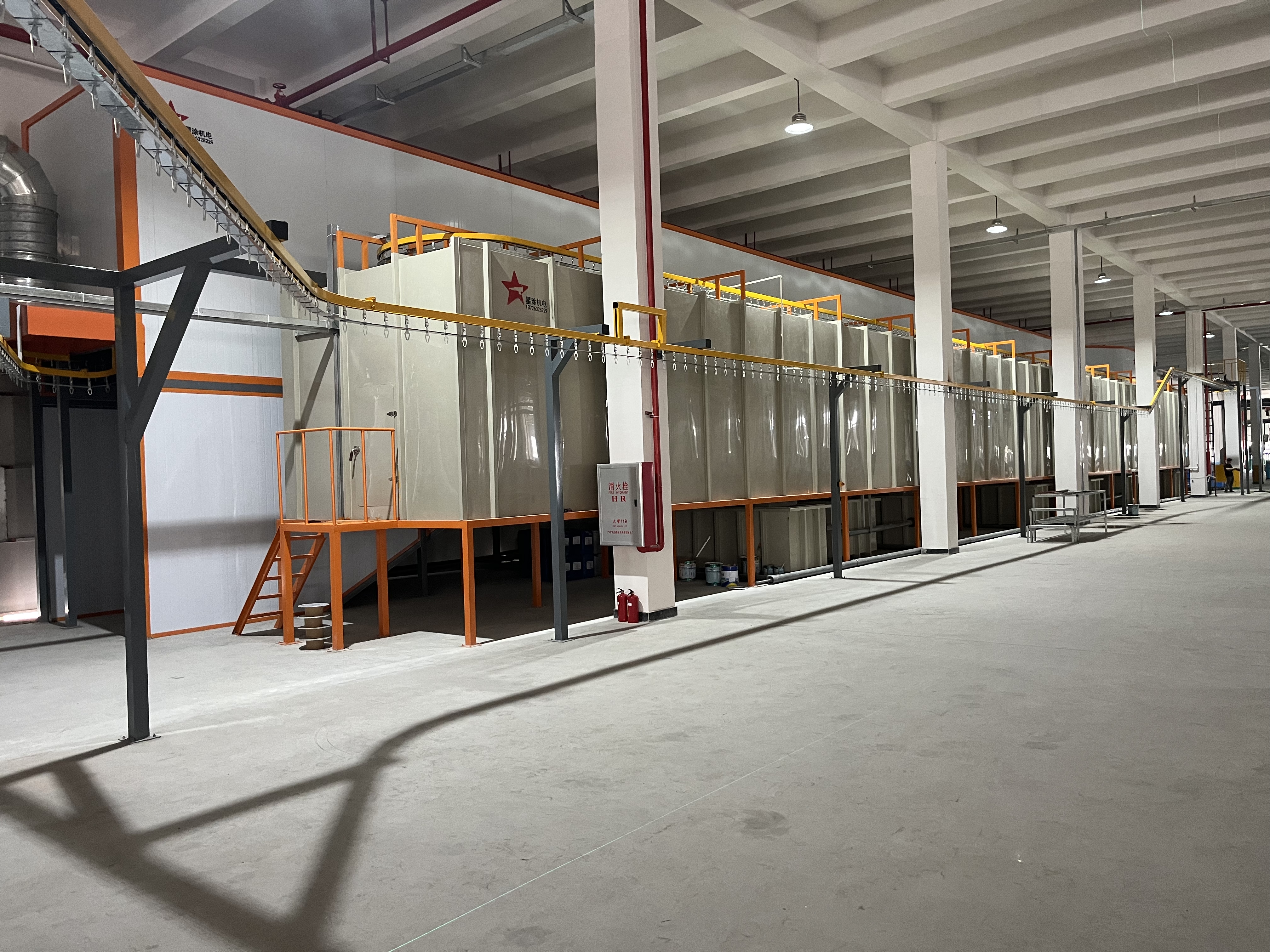Errore nel formato dell'e-mail
emailCannotEmpty
emailDoesExist
pwdLetterLimtTip
inconsistentPwd
pwdLetterLimtTip
inconsistentPwd


Electrophoretic Coating vs Powder Coating A Complete Guide for Industrial Applications
In industrial manufacturing, choosing the right surface finishing process is essential for ensuring durability, corrosion resistance, and appearance of metal components. Two of the most widely used technologies are electrophoretic coating (E-coating) and powder coating. Both provide excellent protective finishes, but they differ significantly in process, performance, and cost.
This article provides a detailed comparison of electrophoretic coating vs powder coating, helping manufacturers, engineers, and procurement managers decide which solution is best for their specific applications.
What Is Electrophoretic Coating (E-Coating)?
Electrophoretic coating, often called E-coating, is a painting process that uses an electric current to deposit a water-based paint or resin onto a metal surface. The workpiece is immersed in a bath containing paint particles suspended in water. When an electric voltage is applied, the charged paint particles migrate and uniformly coat the entire surface—even hard-to-reach areas.
Key Features of E-Coating:
-
Excellent corrosion resistance due to complete coverage.
-
Thin and uniform film thickness.
-
Can reach complex geometries and cavities.
-
Typically used as a primer coat, often followed by powder coating or topcoat paint.
Common Applications: Automotive bodies, household appliances, agricultural machinery, and electrical components.
What Is Powder Coating?
Powder coating is a dry finishing process where finely ground powder (resin and pigment) is electrostatically charged and sprayed onto a grounded metal surface. The coated part is then baked in an oven, causing the powder to melt and cure into a hard, protective layer.
Key Features of Powder Coating:
-
Provides a thicker and more decorative finish than E-coating.
-
Available in a wide range of colors, textures, and gloss levels.
-
Strong mechanical durability and chemical resistance.
-
Ideal as a final topcoat without additional painting.
Common Applications: Furniture, outdoor equipment, automotive parts, consumer electronics casings, and architectural metalwork.
Electrophoretic Coating vs Powder Coating Key Differences
| Feature | Electrophoretic Coating (E-Coating) | Powder Coating |
| Process | Immersion in water-based bath + electric current | Electrostatic spraying of dry powder + curing in oven |
| Film Thickness | Thin (15–35 microns) | Thick (60–120 microns) |
| Coverage | Excellent, even on complex shapes and cavities | Limited on deep recesses, best on external surfaces |
| Finish | Smooth, uniform, usually black or neutral | Wide color and texture options |
| Durability | High corrosion resistance, primer-level protection | Strong mechanical durability, topcoat-level protection |
| Cost | Lower material cost, but requires large tanks | Higher material cost, but more decorative |
| Applications | Automotive primers, electrical components | Furniture, consumer goods, outdoor equipment |
Advantages of Electrophoretic Coating
-
Complete Coverage – Unlike spraying methods, E-coating reaches every corner, making it ideal for complex or hollow parts.
-
Thin Film Control – Ensures precision for parts that need dimensional accuracy.
-
High Corrosion Resistance – Often used in automotive bodies as a protective base layer.
-
Eco-Friendly – Water-based system with lower VOC emissions compared to traditional liquid coatings.
Advantages of Powder Coating
-
Decorative and Durable – Provides both aesthetics and long-lasting protection in one step.
-
Thicker Film – Creates a strong barrier against scratches, UV radiation, and chemicals.
-
Variety of Styles – Matte, gloss, metallic, textured, or even custom finishes available.
-
Environmentally Friendly – No solvents, overspray can often be recycled.
Which One Should You Choose?
The decision between electrophoretic coating and powder coating depends on the specific requirements of your product.
-
Choose E-Coating if:
-
You need complete coverage, including inside cavities.
-
Corrosion resistance is a top priority.
-
The coating will serve as a primer layer for further painting.
-
-
Choose Powder Coating if:
-
You need a final topcoat with color and aesthetics.
-
Durability and impact resistance are essential.
-
The product will be exposed to outdoor conditions or frequent handling.
-
In many industries, the two processes are combined: E-coating is applied as a primer for corrosion protection, followed by powder coating as a decorative and durable topcoat. This “duplex system” delivers the best of both worlds.
Electrophoretic Coating vs Powder Coating in Real-World Industries
-
Automotive Industry: Car bodies are often first E-coated for rust protection, then powder coated or painted for color and aesthetics.
-
Appliances: Washing machines, refrigerators, and microwaves often use E-coating as a primer, followed by powder for appearance.
-
Outdoor Furniture: Powder coating alone is popular for its decorative, weather-resistant finish.
-
Electronics: E-coating provides a thin, insulating layer for circuit components.
Final Thoughts
Both electrophoretic coating and powder coating play crucial roles in modern manufacturing. While E-coating excels at uniform coverage and corrosion resistance, powder coating offers unmatched aesthetics and durability. Choosing the right method—or combining the two—depends on your product’s design, environment, and cost considerations.
At Star Coating, we specialize in coating equipment and solutions that help manufacturers achieve reliable, high-quality finishes. If you’re exploring which coating technology is right for your production line, feel free to reach out—we’re here to share our expertise.



